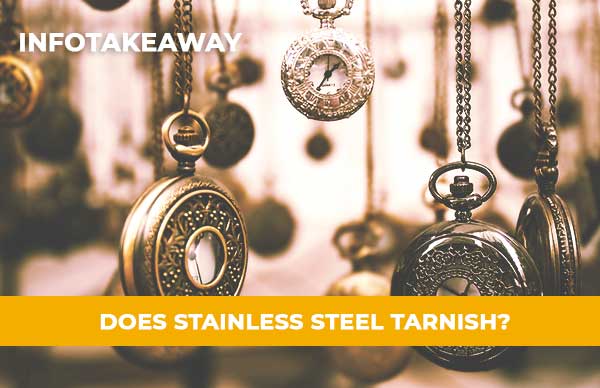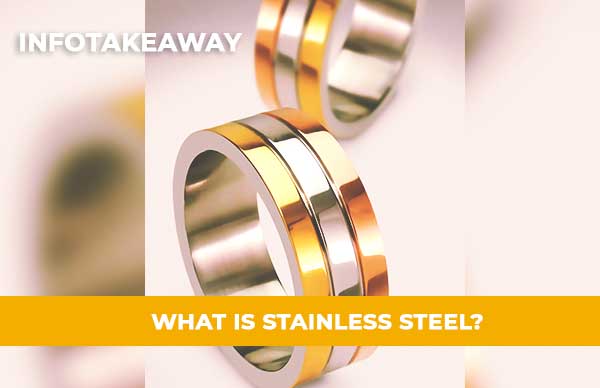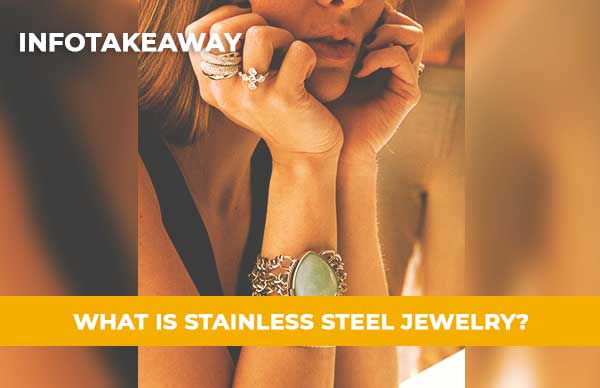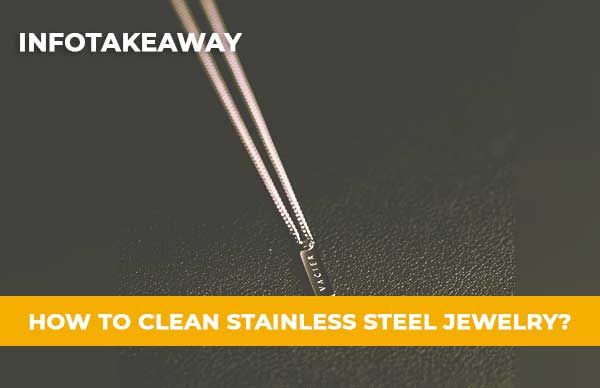Stainless steel is known for its look and shiny surface. If you are wondering whether does stainless steel tarnish, then the answer is mostly yes, but it also depends on various factors. Stainless steel gives an aesthetic look. For this purpose, it is used in those materials where look matters.
Just because your material is rust-resistant, that does not mean it will not be affected by environmental changes. Exposure to harsh conditions such as high moisture and chemicals can cause damage to it. Once your stainless steel pot or any other product gets old, it loses its original color and shiny surface, appearing dull and gloomy.
It is a durable substance and for which is used in steel industries. When we consider the tarnishing of the steel, the type of stainless steel also matters. Some of them are more damaging, while others damage less.
The main difference is the level of the elements making this material. Mainly manganese, chromium, carbon, and iron are present in it. The products such as 316L steel contain high amounts of iron, chromium, nickel, manganese, and carbon.
It is more likely to tarnish more than the 304L stainless steel type with relatively higher levels of nickel mineral. Although it gets tarnished, it will not get corrosion easily because of chromium. It prevents oxidation on the surface in which oxygen reacts with the top layer of the metal.
However, if the protective layer is present on the surface, I will further delay the process. So for the next time, if you trust a certain quality stainless steel, you should also take extra precautions for protection.

What is Stainless Steel?

It is an alloy that is a combination of iron, chromium, and, in some cases, nickel and other metals that resist corrosion. It is defiantly a recyclable material known as “green material.” Its recovery rate is 100%. It is also environmentally free so that it ensures sustainable construction. Also, it does not leach its components to modify the consistency when it comes in contact with the water.
It is also hygienic, durable, and offers other aspects. It contains 10.5% of chromium, less than 1.2% of carbon, and other elements that are alloy in nature. The properties are enhanced by adding elements such as nickel, molybdenum, titanium, niobium, manganese, etc.
When stainless steel comes in contact with the oxygen, the chromium oxidizes to form chromium oxide and protection. However, it is also repairable. Just because of its aesthetic appearance, it is mostly used in building envelopes, interior design, and street furniture.
It is used in many metal forming modes and remains highly resistant to heavy water damage. Also, it has good mechanical behavior at low or high temperatures. It is temperature resistant until 800°C and is ranked as A2s1d0 because it resists fire and doesn’t produce toxic fumes.
These products are easy to clean, and you are not supposed to apply various agents for washing. However, the application of the cleaning agents also damages the metal surface, so here you are provided ease for cleaning. Five categories of stainless steel differ on the base of the alloy elements present in them. If you are still unsure whether does stainless steel tarnish, then in simple words, no it doesn’t.
Types of Stainless Steel
There are different stainless steel grades, but all of the stainless steel is divided into two groups.
Austenitic Stainless Steel
Compared to other types, it contains a high amount of chromium with a high amount of chromium, nitrogen, and molybdenum. Because of its renewed properties, it is used in kitchen cutlery and storage pots. Since it is highly corrosion-resistant, it is used in a highly corrosive environment. One of the most common types is 304 and 904L (N08904). The only problem is that it is expensive. A good austenitic stainless steel piece can last a lot longer as compared to other types.
Ferritic Stainless Steel
It contains a low quantity of carbon. Carbon content does not exceed 0.1%. However, other elements are also added to it, such as chromium. Because of being stress-resistant, it is highly used in products such as car components, kitchen cookware, and industrial entities. The commonly known ferric alloys are 430 and 434.
Duplex Stainless Steel
It is an alloy of ferritic and austenitic stainless steel. It is highly stronger than the above-described steel and contains. It also contains less nickel than the austenitic, which is why it is less expensive than them. It is highly weldable, so it can be molded to shape various compounds. Two of the most common type of duplex is S31803 stainless steel and S32205 stainless steel.
Martensitic Stainless Steel
It is highly similar to ferritic stainless steel. The only difference is the carbon content. In ferritic, the carbon percentage is below 0.1%, and in martensitic, the carbon content is up to 1%. The carbon content makes it hardened. So it is used in products where high strength is needed, but it also reduces the corrosion-resistant property. You will see it in pumps and valves. Two of the most common martensitic stainless steel are 431 and 420S45.
What is Stainless Steel Jewelry?

It is durable, strong, and rust-resistant. It looks like silver, but it doesn’t get scratched, dings, or dents, unlike silver. It is used to make any jewelry such as necklaces, bracelets, watches, rings, etc. In addition to the many other steel compounds, it contains chromium that protects it from getting rust.
Chromium acts as a protective coating and hence prevents oxidation on the top surface. That’s why jewelry made with stainless steel silver does not get rust easily.
It can be identified with the numbering present on its indication chromium and nickel percentages. For example, if steel is marked with 20/12, it means that it contains 20% chromium and 12% nickel.
The higher the percentages are, the higher is the durability of the metal. This jewelry is easy to handle and requires less maintenance as compared to silver and gold. This property makes it favorable to be used in daily wears. It is highly affordable, but most of the time, its cost depends upon the store you are buying from or perhaps the brand offering it.
How to Clean Stainless Steel Jewelry

How you clean your jewelry depends on the type of jewelry you own. Compared to ordinary steel, the rust resistance of stainless steel is quite high but you should still clean it once a week.
Different ways are used for the cleaning of stainless steel jewelry. However, some of the precautions are also necessary for the protection of the damage. Always keep harsh chemicals away from the surface, such as bleach, perfumes, etc.
Also, keep your jewelry away from water. You should use commercially labeled cleaner while cleaning and avoid cleaners made for silver, copper, or brass as these may be abrasive and can scratch stainless steel surfaces.
With proper cleaning, you can keep its shiny surface for a long time. To keep the luster and shine of the surface, you can use the jewelry polishing cloth. While cleaning, you can vanish away all the dirt, oil, and those essential elements from the surface that make it shiny. So this polishing will bring back the shiny surface.
However, if scratches are many, you can take it to a professional to get its polishing. Before proceeding, you should consider whether it is worth consuming such expense of the polish. Because most of the time, it is highly affordable, and scratching does not bother anymore.
The use of ultrasonic cleaner for cleaning is one of the best and easiest methods of cleaning. However, if your jewelry contains gemstones, it is highly recommended not to use them because they can damage the surface, take off the stones, and ultimately damage the structure.
It is because it works with a lot of vibration and agitation. Below are some methods you can use to clean stainless steel.
Soap and Water
You can clean your stainless jewelry when it gets dirty. It will vanish all of those pollutants present on the surface. For this purpose, use a mild soap liquid and mix with the warm water to make creamy foam.
Now soak your jewelry for several minutes in it. After that, use a soft cotton pad to clean the surface and while rubbing, make sure its structure is not damaged. And if your jewelry contains many grooves and stones, you can use a fine brush to take this dirt out.
The toothbrush is used for this purpose. After cleaning, wash it again with water and clean with a soft cloth to get the final finishing.
Clean Stainless Steel With Baking Soda
Baking soda is also used for this purpose. Mix baking soda and water together until it becomes a thick mixture. Now take a toothbrush and apply to all its surface and grooves and then clean it completely. A toothbrush will provide ease to reach down the grooves for taking off the dirt. At last, wash it with clean water and get the shiny top surface back.
Clean Stainless Steel With Toothpaste
Many people use toothpaste for this purpose. Although it is a good cleaning agent, you should be picky for your toothpaste selection. The one with a thick consistency, white in color, has abrasive and harsh chemicals that can damage the metal surface or cause scratches on the stones.
To protect your original material, you should use a gel that is mild inconsistency and has low chemicals in it. These mild chemicals will wash off the pollutants only, and you will get a shiny surface at last. Always remember the maintenance of the material is more important than its shine.
Avoid While Using Stainless Steel Jewelry

Although it is easy to clean the dirty surface of the stainless steel metal jewelry, also you can bring back the shiny surface. Still, there are some of the considerations if we consider while using can avoid the massive damage.
It would help if you protected it with a moist environment because moisture can promote oxidation on the surface, which results in the creation of chromium oxide, which will ultimately damage the surface.
Cover the surface by keeping it in a plastic bag or aluminum foil to protect its exposure to the environment. In this way, even if the environment is damaging, it will not affect your jewelry. Some other considerations include the following.
Harsh Chemicals
Harsh chemicals are prone to damage the surface. So please protect it from bleach, cosmetics, perfumes, etc. Also, while cleaning with the toothpaste prefer gel paste as compared to a thick one. Jell paste has mild substances.
FAQ – Does Stainless Steel Tarnish
A lot of questions along with “does stainless steel tarnish” get asked, so we’ve compiled a list for your reference.
Does Stainless Steel Turn Green?
Stainless steel will not get damaged and turn your fingers green unless it is made up of high-quality products. It should contain a minimum of 12% chromium.
Do Stainless Steel Rings Tarnish?
Do stainless steel rings tarnish? No, it is resistant to tarnish unless it is not exposed to harsh environmental conditions. Harsh conditions such as moisture can promote the damaging process.
Is Stainless Steel Jewelry Safe For Skin?
Mostly it is an alloy of brass, and such products are very mild to your skin. Therefore stainless steel jewelry is safe for your skin.
Does Stainless Steel Rust?
It is resistant to rusting compared to any other steel material because of chromium, nickel, etc. However, it can get rust even if continually exposed to harsh conditions.
Conclusion – Does Stainless Steel Tarnish
We had a detailed discussion on does stainless steel tarnish, where we discussed various properties and characteristics of the metal. We also discussed its various uses because of its unique properties such as durability, strength, corrosion-resistant, long-lasting, aesthetic look, etc.
Stainless steel jewelry is also available in the market and in high demand because of is less damaging and long-lasting. The metal surface is highly resistant to damage, but continued exposure to harsh environments can cause stainless steel corrosion. The upper protective layer will be converted into an oxide layer via oxidation.
The oxygen reacts with the chromium present on the top surface to form chromium oxide. The protective film remains less prone to damage in normal conditions.
At least 12% chromium should be present in it in order to provide strength and durability. You can easily maintain its shiny surface with some checks and balances, such as taking precautions and cleaning use.
Cleaning can be done in various ways, such as with mild liquid soap, toothpaste, baking soda, etc. Cleaning utensils can also be used for this purpose.
If you enjoyed reading this article, also check out our other articles such as “acrylic overlay on natural nails“, “chiclet teeth“, and “does John Cena have kids?“